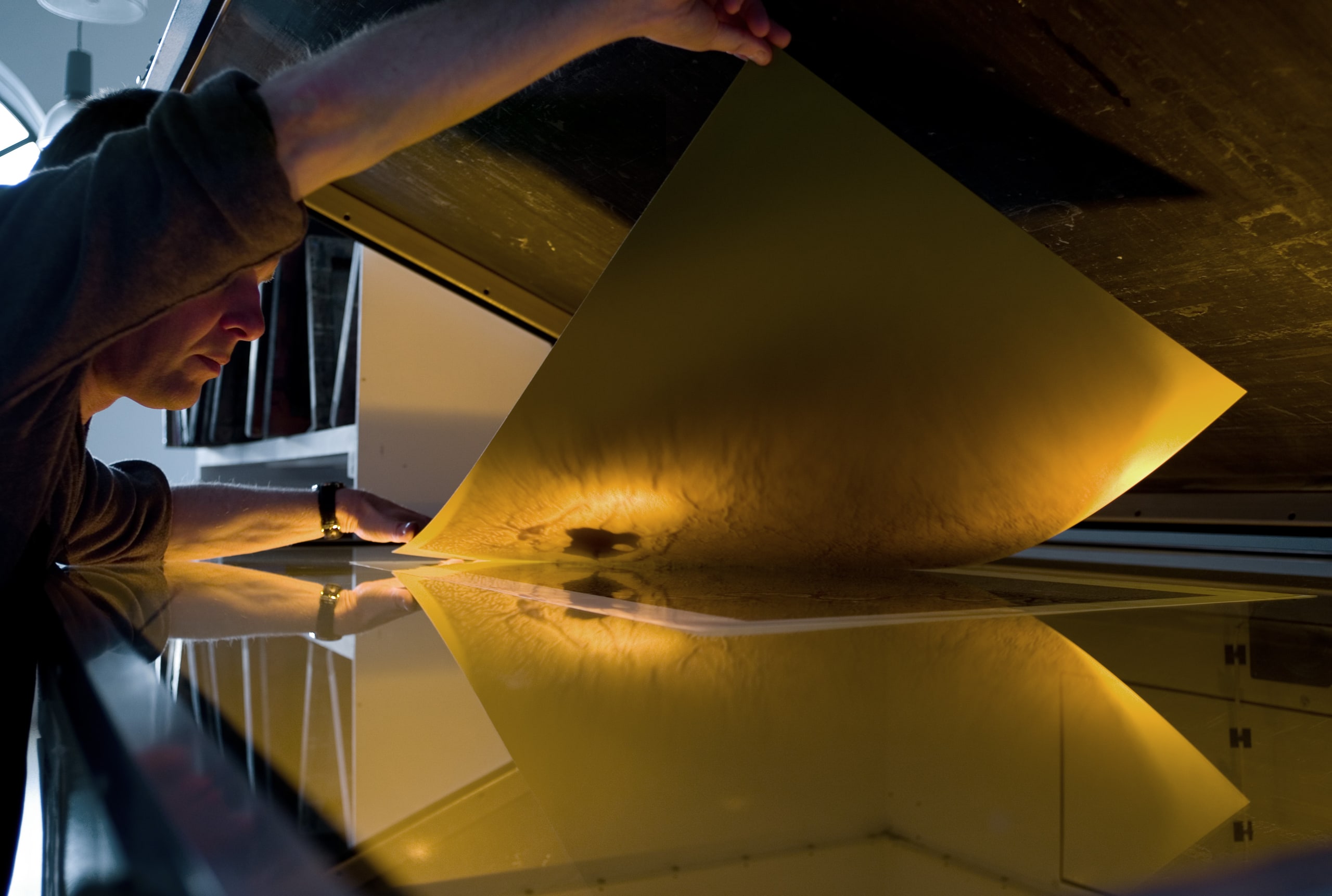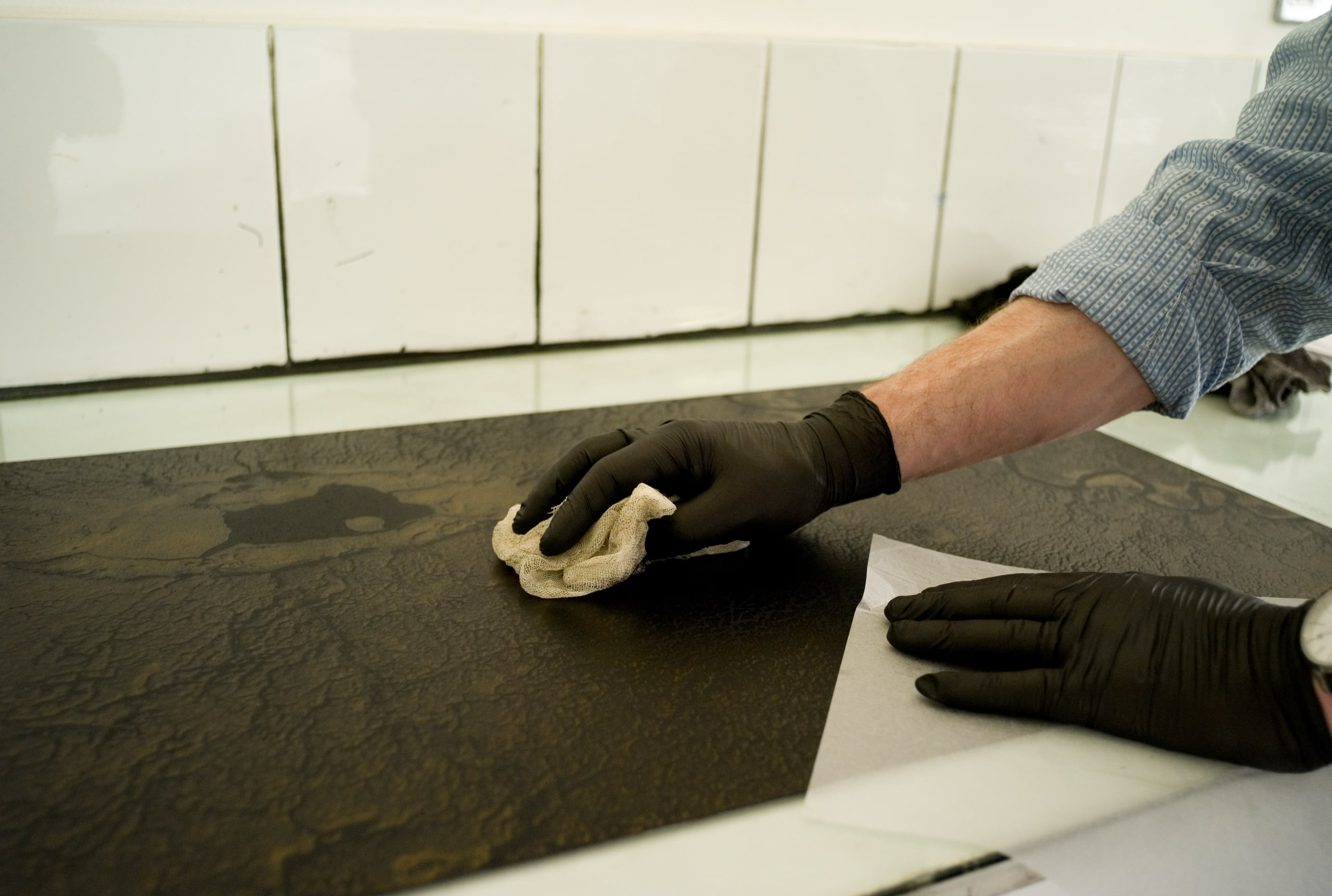
Polymer Photogravure
Polymer Photogravure uses light-sensitive polymer plates to create a photographic image that is inked and printed using traditional etching techniques.
The advantage of polymer photogravure over other photo-printmaking techniques such as photolithography is that the polymer plates give much finer detail and a significantly wider tonal range.

Process one
The photograph is printed digitally onto transparent film at a relatively high resolution. This is then exposed onto the polymer plate, a light sensitive plate with a fine steel backing. Once exposed, the plate develops in water.



Process two
The plate is inked up in a similar manner to a traditional etching plate, using oil-based etching inks. The plate is covered in ink, which is then cleared from the surface, leaving the ink in the image only.

Process three
The plate is put on a traditional etching press and dampened paper placed on top. The pressure the press exerts pushes the ink from the plate to transfer the image onto the paper.
